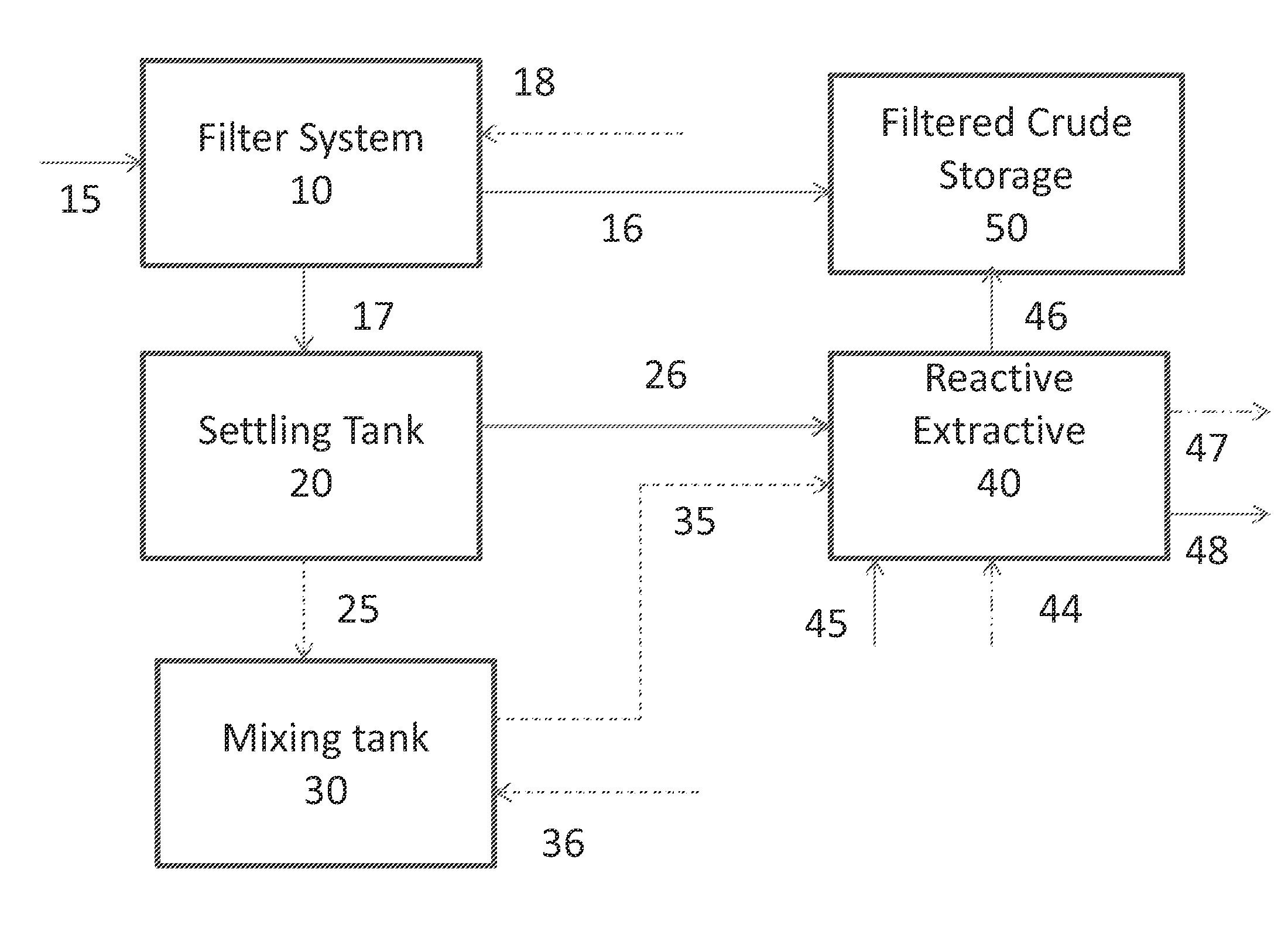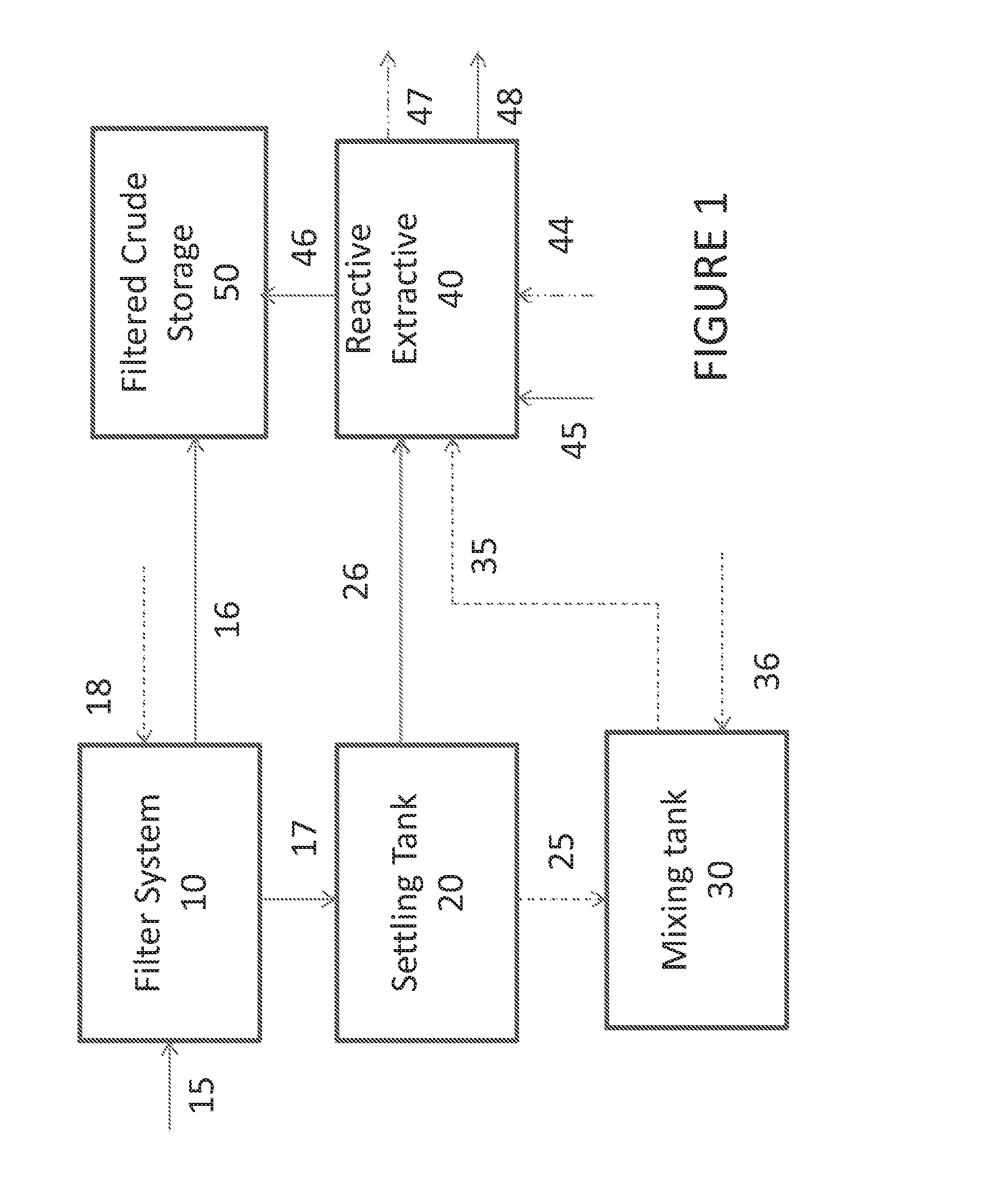Process, Method, and System for Removing Heavy Metals from Fluids
a technology of heavy metals and fluids, applied in the direction of separation processes, filtration separation, non-metal refining, etc., can solve the problems of hydrocarbon loss and waste in the form of oily solids, and achieve the effect of reducing a trace element of mercury
- Summary
- Abstract
- Description
- Claims
- Application Information
AI Technical Summary
Benefits of technology
Problems solved by technology
Method used
Image
Examples
examples
[0067]The illustrative examples are intended to be non-limiting.
examples 1-2
[0068]Different 50° API crude and 55° API natural gas condensate samples with starting Hg concentration ranging from 588 to 2200 ppbw are processed using cross-flow filtration conducted at 175° C. and 75 psig, employing a Teflon® on Woven Fiberglass membrane having a pore size of 1 μm. The retentate is recycled back to the filter system in a recirculation loop with the use of a recirculation pump to combine with the feed to the system. The recirculation pump also maintains a sufficient velocity through the tubes of the filter housing (greater than 10 feet / second) to avoid membrane fouling. A portion of the retentate in an amount of about 2-10% the feed to filtration system is continuously purged from the system. The filtered products are expected to have a mercury concentration of less than 100 ppbw. The purged retentate is expected to have a concentration of 10-50 times the mercury concentration of the feed to the filter system.
example 3
[0069]The filtration in Examples 1-2 continues until there is a substantial pressure build-up, e.g., going from 10-15 psi at the beginning to 25-30 psi. The filter element is back-flushed with nitrogen, along with a small amount of the filtered oil. The back-flushed oil samples are placed into centrifuge tubes, shaken by hand vigorously for about 2 minutes. The back-flushed oil samples are expected to have a concentrated mercury level of at least 10,000 ppwb, if not at least 50,000 ppbw.
PUM
| Property | Measurement | Unit |
|---|---|---|
| vol. % | aaaaa | aaaaa |
| median particle size | aaaaa | aaaaa |
| median particle size | aaaaa | aaaaa |
Abstract
Description
Claims
Application Information
 Login to View More
Login to View More - R&D
- Intellectual Property
- Life Sciences
- Materials
- Tech Scout
- Unparalleled Data Quality
- Higher Quality Content
- 60% Fewer Hallucinations
Browse by: Latest US Patents, China's latest patents, Technical Efficacy Thesaurus, Application Domain, Technology Topic, Popular Technical Reports.
© 2025 PatSnap. All rights reserved.Legal|Privacy policy|Modern Slavery Act Transparency Statement|Sitemap|About US| Contact US: help@patsnap.com


